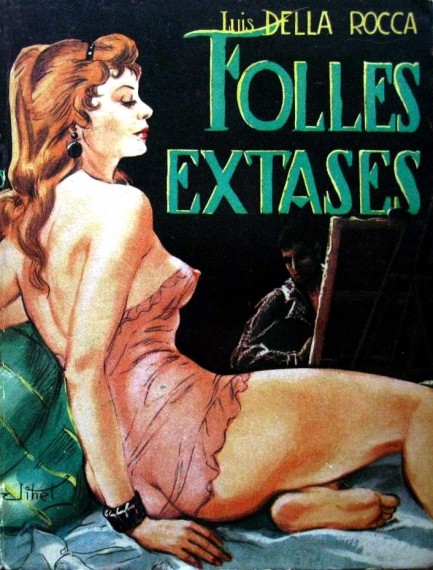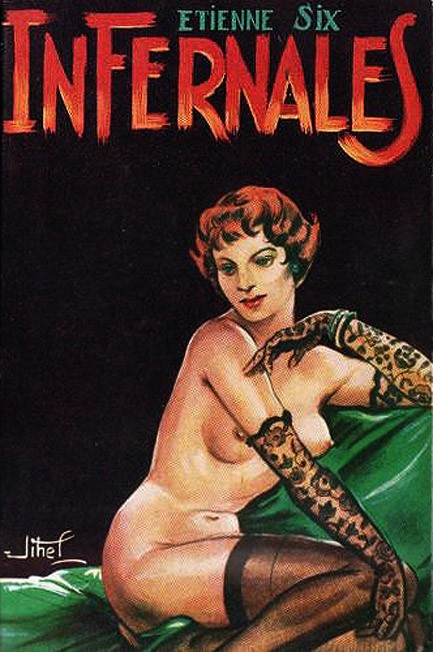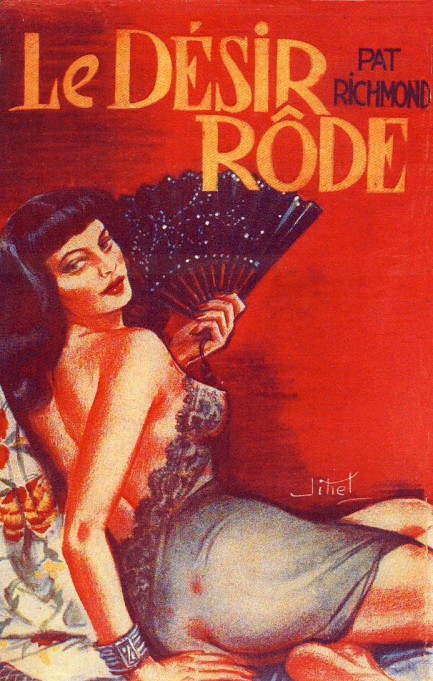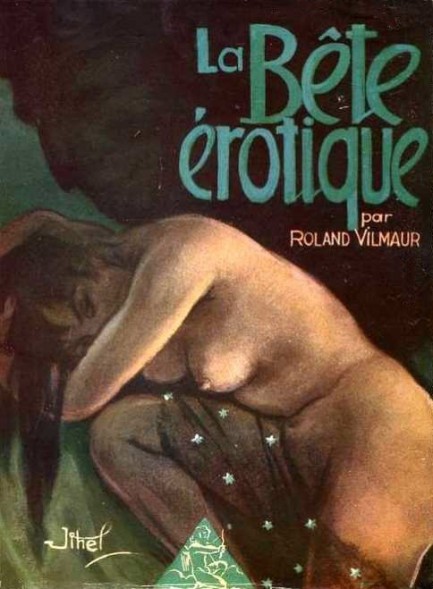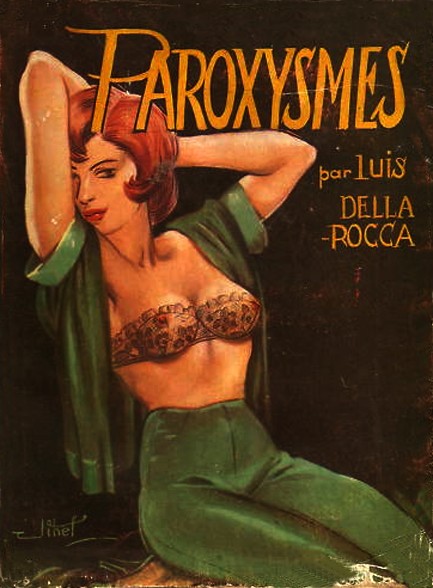| Vintage Pulp | Jun 28 2024 |



Above are a pair of covers by French illustrator Jacques Leclerq, aka Jihel, who by coincidence went in a similar direction on both, though it looks to us like the top book, 1957's 3 filles en folie, features his trio of filles in a somewhat paradisiacal setting, while the the bottom one, 1953's Le temps des filles, features them in a place that looks a lot like hell. We bet the trio in hell are more fun. See more from Jihel by clicking his keywords just below.
| Vintage Pulp | Mar 14 2022 |

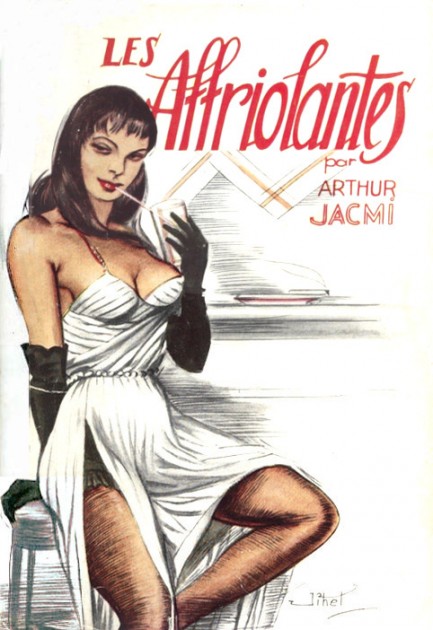
| Vintage Pulp | Jan 22 2020 |

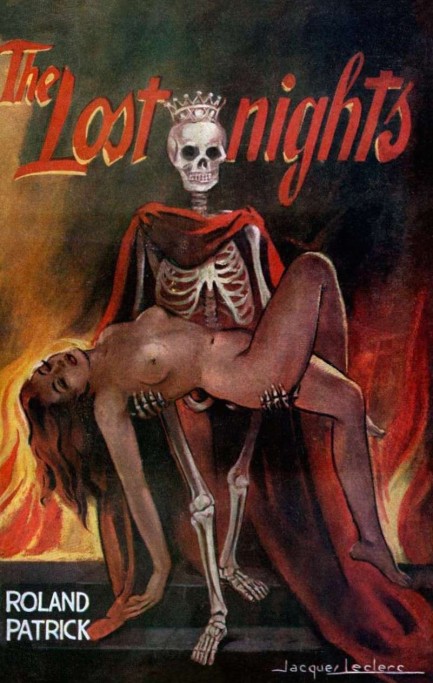
Above is another fun cover from French illustrator Jacques Leclerc, who also signed his art as Jihel, and here works his magic on Roland Patrick's The Lost Nights. We've featured this artist several times. See more here, here, and here.
| Vintage Pulp | Jul 7 2019 |

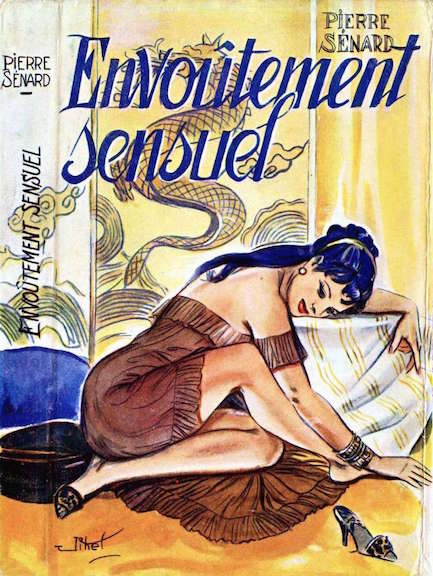
More from France today. Above you see Envoûtement sensuel, by Pierre Sénard for Éditions C.P.E., published in 1958. The title translates to “sensual enchantment,” and enchanting is a perfect word to describe this cover, which has a very romantic feel. The art wraps around onto the book's spine too, which makes it even nicer. We assume the cover figure is contemplating something other than her right shoe, but maybe not—we know a couple of women that get this way about footwear. The artist here is Jacques Leclerc, who signed his work as Jihel, and we think it's among his best.
| Vintage Pulp | Oct 11 2014 |

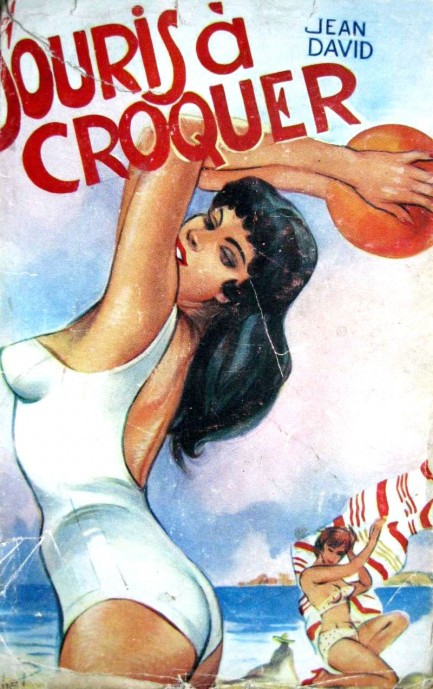
Souris à croquer means “chewable mouse.” Nothing more to add there, really, except to speculate that maybe it’s a slang phrase. French friends help us out. Moving on, you may already know the master illustrator Jean David, who signed his work J. David. Did he write this book? We have no idea, and neither did anyone else we asked. Considering J. David painted from the 1940s onward, and this book by Jean David appeared in 1958, it’s certainly possible they’re the same person. Note to selves: more research. Souris à croquer, by the way, means “chewable mouse.” Did we mention that already? Well, it bears repeating. The cover art here is not by J. David, but by Jihel, aka Jacques Leclerc.
Update: Jo B. from Marseille has the answer, writing: "Souris à croquer" means "a mouse to eat." "Mouse" is a little slang term (not vulgar) to designate a pretty girl. "Croquer" is the way you eat an apple, a bar of chocolate or something like that. I don't know the real word in English (munch, crunch?). Maybe we have two mice to crunch on the cover as "souris" can be one mouse or many mice.
Thanks so much Jo.
| Vintage Pulp | Aug 26 2014 |

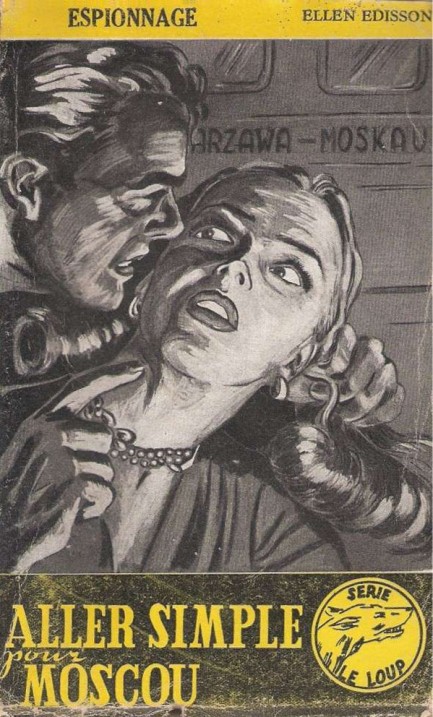
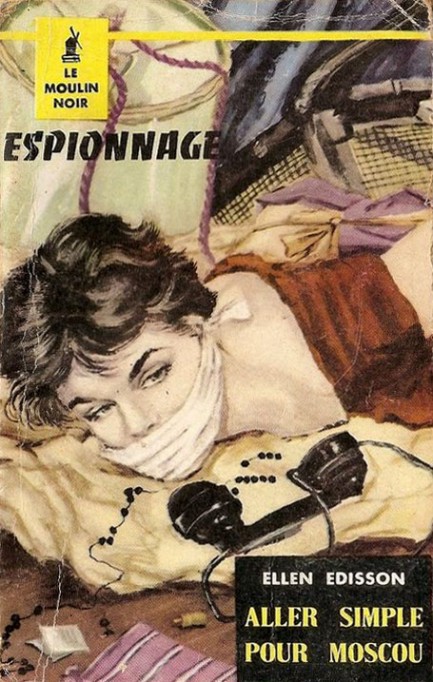
| Vintage Pulp | Jul 15 2011 |

Below, La Vie Parisienne #79, published July 1957, with Roger Brard cover art along with beautiful interior pieces from Jihel, Donnés, Jac, Denis, van Homme, and others.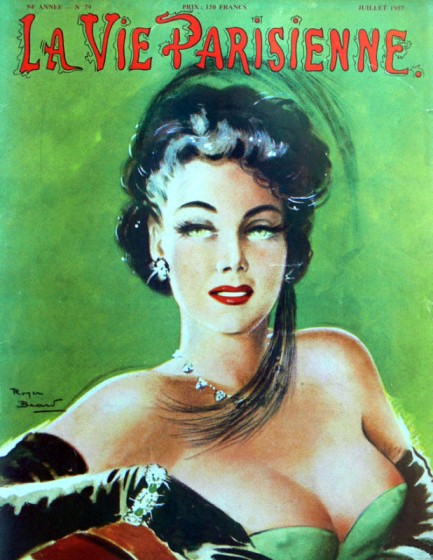
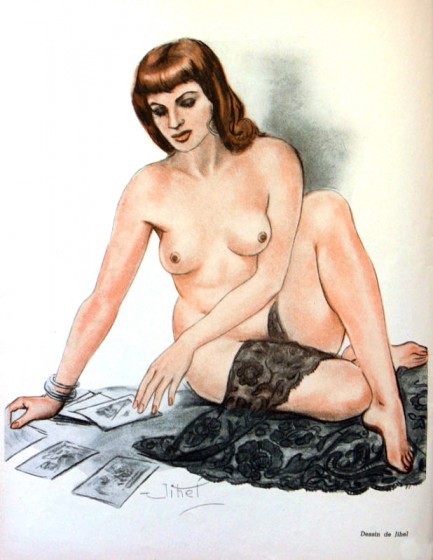
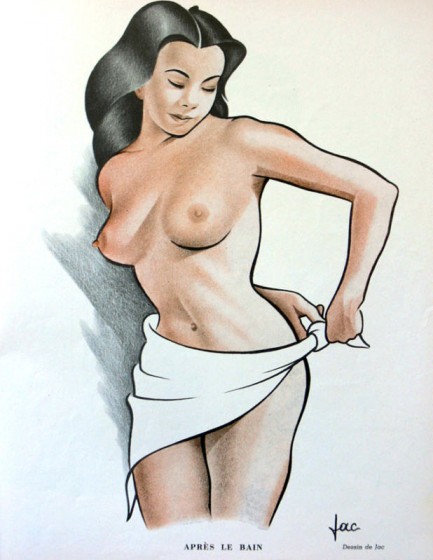
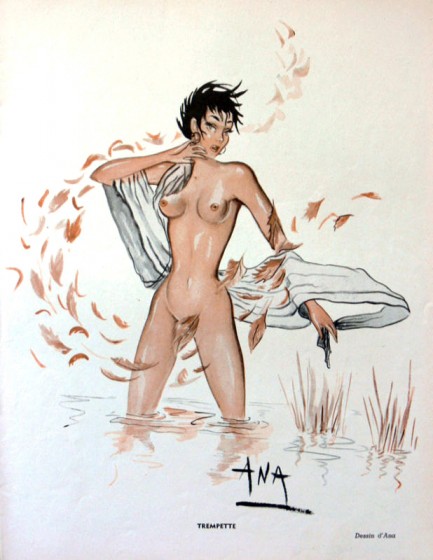
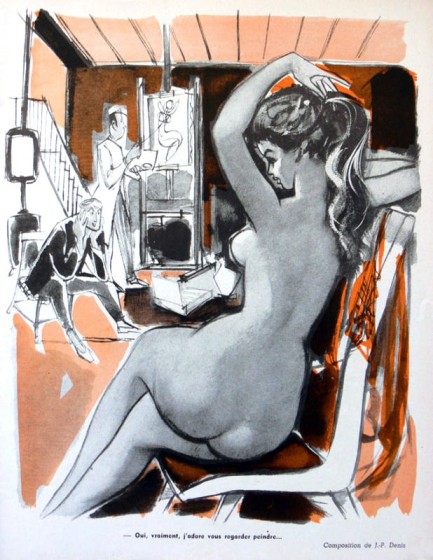
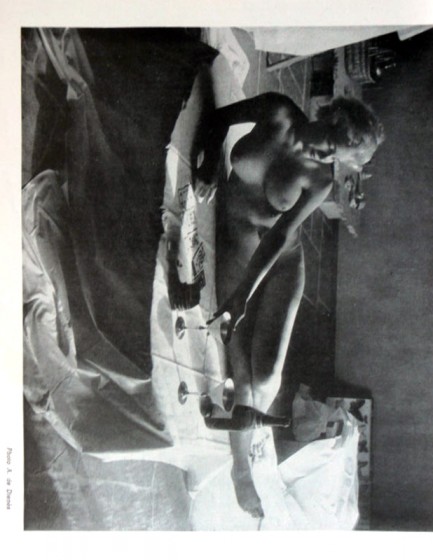
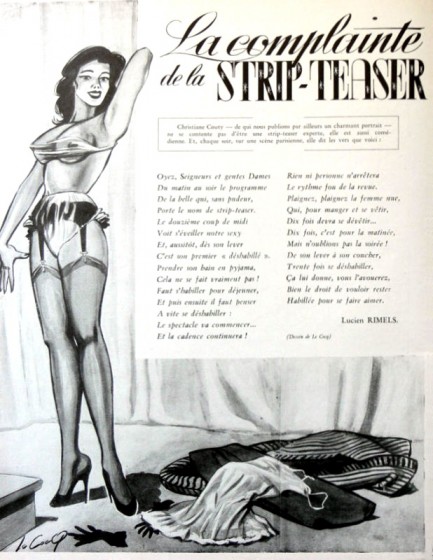
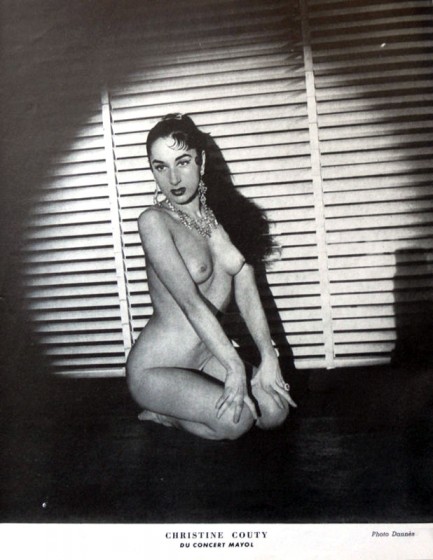
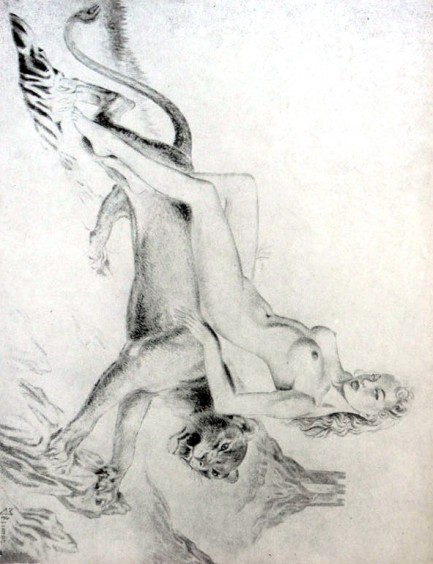
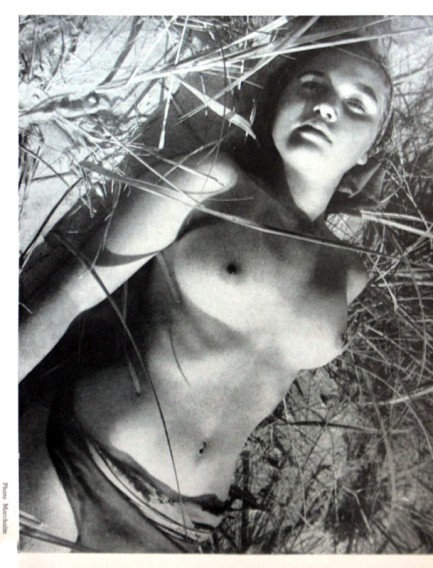
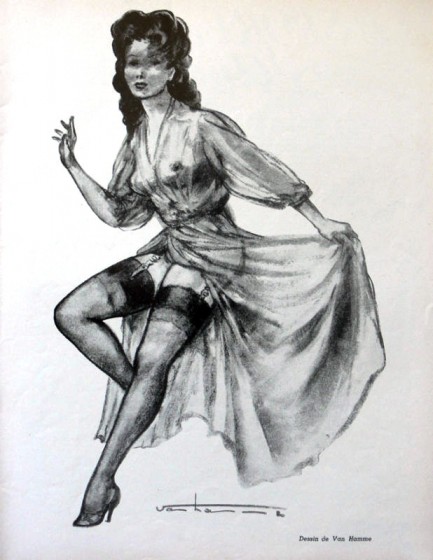
| Vintage Pulp | Oct 13 2010 |

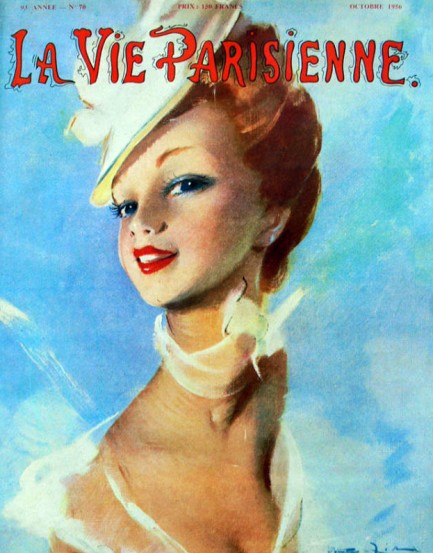
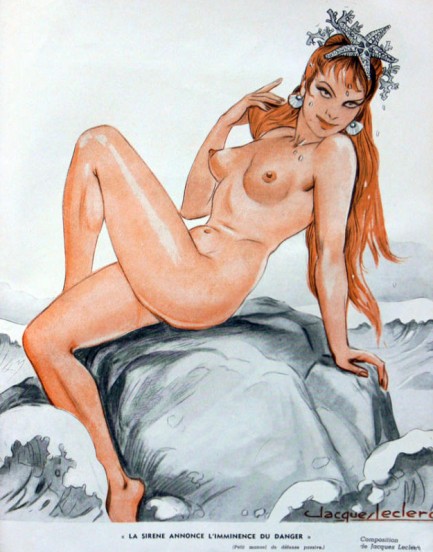
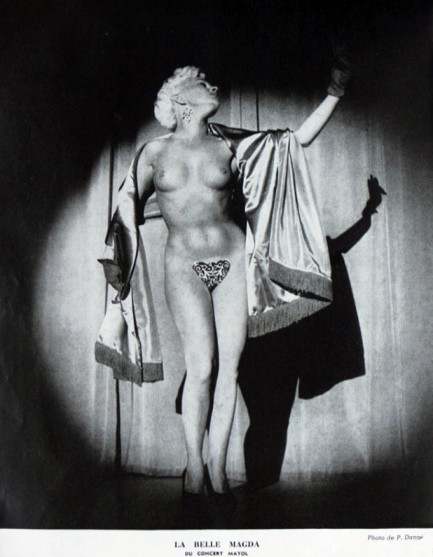
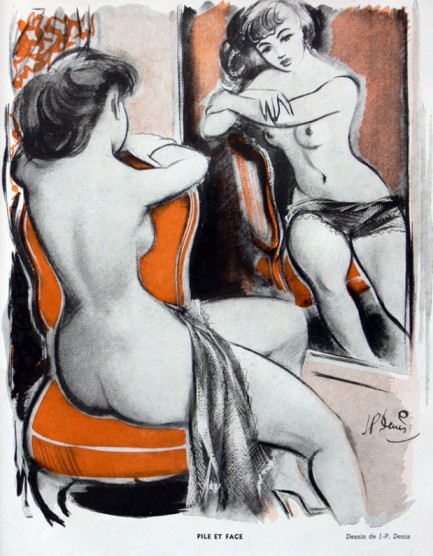
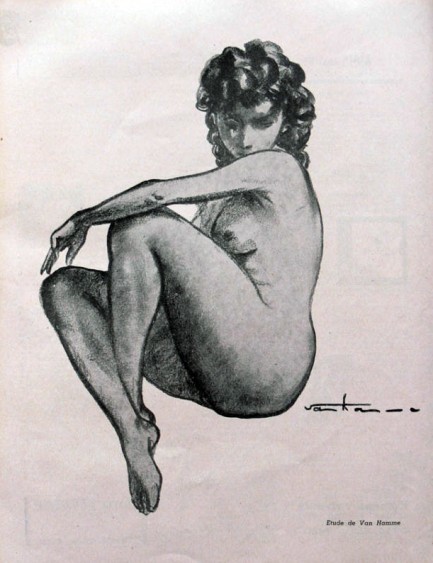
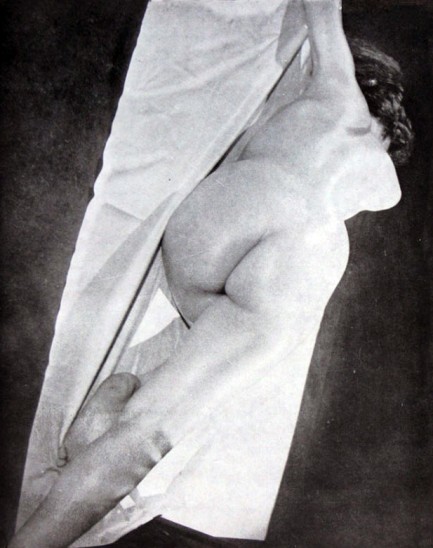
Cover and assorted interior pages from La Vie Parisienne, October 1956, with art from Jihel, aka Jacques Leclerc, in panel two. You can see five prime examples of Jihel at his best here.
| Vintage Pulp | Nov 6 2009 |

